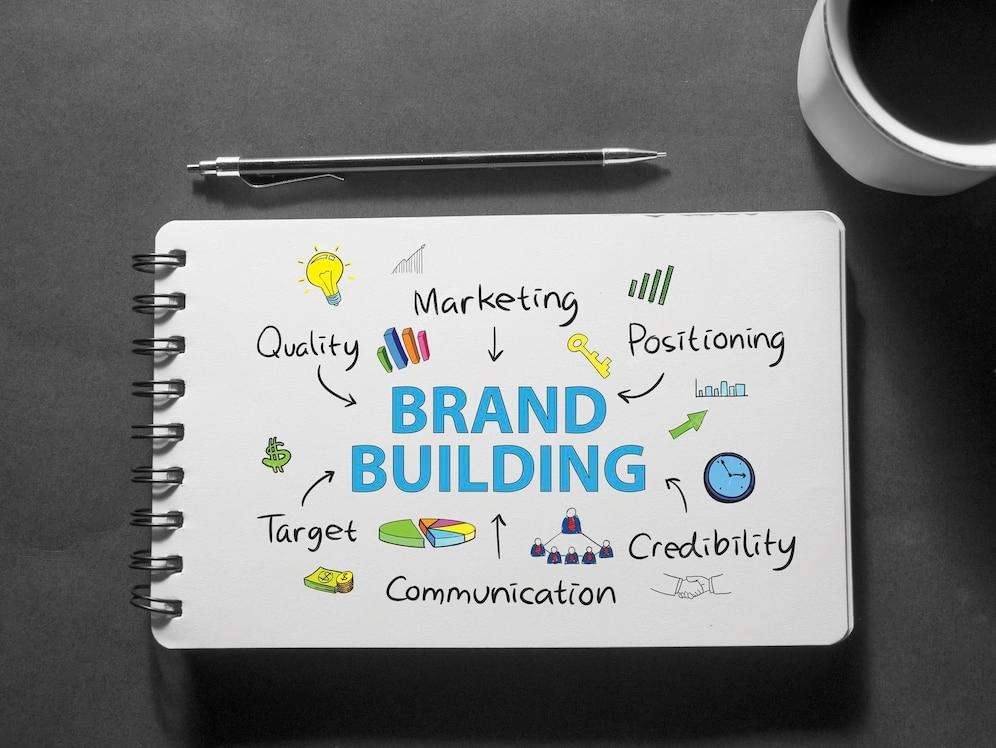Simply having a LinkedIn profile isn’t enough—your profile must communicate authority, authenticity, and a unique value proposition. In this guide, I will walk you through actionable steps and key strategies to build a magnetic personal brand on LinkedIn that resonates with high-paying clients, without the fluff.

1. Understanding the Importance of Personal Branding on LinkedIn
Why LinkedIn Personal Branding Matters
LinkedIn isn’t just a social network; it’s the world’s largest professional platform where business deals, partnerships, and recruitment happen. Think of it as a global marketplace where personal brands are the storefronts, and premium clients are the buyers. With over 930 million users, standing out is crucial to attract the right kind of attention.
A well-crafted LinkedIn personal brand positions you as an expert, builds trust, and keeps you top of mind when clients need a solution that you offer. It’s not about boasting; it’s about showcasing the value you bring to the table in a way that speaks directly to your target clients.
2. How to Define Your Unique Value Proposition on LinkedIn
What Makes You Different?
Your unique value proposition (UVP) is the core of your personal brand on LinkedIn. It’s that distinct blend of skills, experiences, and perspectives that no one else can offer. Before you even think about your LinkedIn profile, ask yourself: What do I bring to the table that’s different from everyone else in my field?
How to Define Your UVP:
- Identify your niche: What specific problem do you solve? For whom?
- Find your strength: What do your past clients praise you for?
- Communicate simply: Frame your UVP in simple, clear language. Avoid jargon and buzzwords.
Your UVP needs to be evident in your LinkedIn headline, summary, and content. This consistency ensures that premium clients understand exactly why they should choose you over someone else.
3. Crafting a Consistent LinkedIn Voice and Messaging
The Importance of Consistency
Just like any brand, consistency in messaging is key to being recognized and remembered. Your tone, style, and messaging should reflect your professional identity. When potential clients visit your LinkedIn profile, they should feel like they’re meeting the same person across your posts, comments, and articles.
Tips for Crafting a Consistent Voice:
- Authentic tone: Speak as you would in a professional setting, but don’t lose your personality.
- Value-driven messaging: Focus on how your expertise benefits others.
- Engage, don’t preach: Ask questions, invite opinions, and create conversations.
4. Using Visual Elements to Enhance Your LinkedIn Brand
Why Visuals Matter
While LinkedIn is primarily a text-driven platform, visual branding elements—such as your profile photo, banner, and featured images—play a huge role in creating a lasting first impression.
Key Visual Elements:
- Profile photo: Use a professional headshot that reflects the industry you’re in.
- Banner image: This is prime real estate. Use it to showcase your brand colors, tagline, or a call-to-action.
- Featured content: Leverage the “Featured” section to highlight your best work, testimonials, or case studies.
5. How to Build Authority and Trust on LinkedIn
The Currency of Trust
Building authority on LinkedIn isn’t just about posting thought-leadership articles. It’s about showing up consistently, offering valuable insights, and building relationships with your audience.
Ways to Build Authority:
- Share original insights: Post regularly about your industry trends, best practices, and personal experiences.
- Be consistent: Engage with others’ content, answer questions, and contribute meaningfully to discussions.
- Share successes: Highlight case studies, client testimonials, and results-driven stories.
6. The Role of Authenticity in LinkedIn Personal Branding
Authenticity is Key
In a sea of overused buzzwords and self-promotion, authenticity shines through. Your LinkedIn personal brand should not be about trying to impress—it should be about being real and relatable. Authenticity builds deeper connections and fosters trust.
How to Be Authentic:
- Show vulnerability: Share lessons from your failures, not just your wins.
- Be transparent: Talk openly about your journey, challenges, and how you overcome them.
- Engage genuinely: Comment and interact with others as you would in real life, not just to be seen.
7. Showcasing Your Expertise Through LinkedIn Content

Content is King
LinkedIn content is your vehicle for showcasing your expertise. Through posts, articles, and comments, you can demonstrate your knowledge, build your brand, and attract clients. The key is to offer value with every piece of content.
Content Strategies for Showcasing Expertise:
- Share actionable advice: Offer tips that your target audience can implement right away.
- Create long-form articles: Use LinkedIn’s publishing platform to write in-depth articles on niche topics.
- Engage with industry news: Comment on trending news to show you’re on top of your game.
8. Creating a LinkedIn Brand that Resonates with High-Paying Clients
Understand Your Audience
To attract premium clients, your brand must speak directly to their needs and values. What do they care about? What problems are they facing? Your content, messaging, and interactions need to reflect that you understand and can solve these issues.
Tailoring Your Brand to Premium Clients:
- Use client language: Talk in terms your clients use. Avoid technical jargon that only industry insiders understand.
- Show value: Instead of just talking about what you do, explain the tangible results clients can expect from working with you.
- Be selective: Not every client is a fit. Position your brand in a way that attracts the high-value clients you want.
9. The Impact of LinkedIn Recommendations on Your Personal Brand
Social Proof Sells
LinkedIn recommendations are powerful because they provide third-party validation of your expertise. They show potential clients that you’ve delivered results for others and can do the same for them.
How to Maximize Recommendations:
- Ask satisfied clients: After a successful project, request a recommendation.
- Offer a template: Make it easy for clients by providing a short template they can modify.
- Reciprocate: Write recommendations for others—this often leads to them writing one for you.
10. How to Use LinkedIn Stories to Reinforce Your Personal Brand
The Power of Storytelling
LinkedIn Stories are an underutilized tool for reinforcing your brand. Through short, visual snippets, you can showcase your daily work, share behind-the-scenes insights, and give a more personal touch to your brand.
Story Ideas:
- Share success moments: Quick wins, positive client feedback, or project milestones.
- Behind-the-scenes: Show your process or day-to-day routine.
- Quick tips: Provide bite-sized advice related to your expertise.
11. Leveraging LinkedIn Featured Content for Brand Building
Make Your Best Work Stand Out
The “Featured” section of your LinkedIn profile is prime real estate for showcasing your expertise. Use it wisely to feature content that reinforces your personal brand and gives potential clients an immediate sense of your skills.
Featured Content Ideas:
- Case studies: Showcase successful client projects.
- Articles: Link to long-form articles that demonstrate your thought leadership.
- Testimonials: Include client testimonials that speak to your expertise and results.
12. How to Engage with LinkedIn Influencers to Enhance Your Brand
Collaborate with Key Players
Engaging with LinkedIn influencers in your industry is a smart way to elevate your personal brand. When you interact with thought leaders, you gain visibility among their audience, expanding your reach and credibility.
Strategies for Engaging with Influencers:
- Meaningful comments: Leave thoughtful, value-adding comments on their posts.
- Collaborate: Reach out for interviews, co-authored content, or partnerships.
- Amplify their content: Share and comment on their posts to start building relationships.
13. The Role of LinkedIn Articles in Establishing Thought Leadership
Positioning Yourself as an Expert
LinkedIn’s publishing platform allows you to write long-form articles that can help establish you as a thought leader. Well-researched, in-depth articles demonstrate your deep understanding of your field and build credibility with premium clients.
How to Create Thought-Leadership Articles:
- Choose niche topics: Write about specific issues that your audience cares about.
- Be data-driven: Use statistics, case studies, and research to back up your points.
- Offer actionable takeaways: Don’t just inform—give readers something they can use.
14. How to Use LinkedIn Hashtags to Expand Your Brand’s Reach
Getting Your Content in Front of the Right People
Hashtags on LinkedIn can help you reach a larger audience, but only if used strategically. By using relevant hashtags, you increase the chances that your content will appear in front of the right audience—potential premium clients who are looking for your expertise.
Hashtag Best Practices:
- Use industry-specific hashtags: Focus on hashtags that your target clients follow.
- Don’t overdo it: Stick to 3–5 relevant hashtags per post.
- Mix broad and niche hashtags: Combine popular hashtags with more specific ones to reach both a larger audience and a targeted group.
For example, if you’re a leadership consultant, hashtags like #Leadership, #ExecutiveCoaching, and #TeamBuilding could help attract premium clients in need of your services.
15. Building a Brand Through LinkedIn Group Participation
Tapping into Niche Communities
LinkedIn Groups are a goldmine for networking and building your personal brand within a specific community. The more active you are in groups that align with your target audience, the more opportunities you’ll have to showcase your expertise and connect with potential premium clients.
How to Use LinkedIn Groups for Brand Building:
- Join relevant groups: Look for groups where your ideal clients hang out.
- Participate actively: Share insights, answer questions, and engage in discussions regularly.
- Position yourself as a problem solver: Offer solutions and practical advice, establishing your authority without being overtly promotional.
LinkedIn Groups also allow you to build long-term relationships in a more intimate setting, which is invaluable for attracting high-paying clients.
16. Using LinkedIn Polls to Reflect Your Brand’s Values
Engaging Your Audience with Interactive Content
LinkedIn polls are a fun and engaging way to gather feedback, spark conversations, and demonstrate your expertise. They allow you to position yourself as someone who values input and thrives on understanding the needs of your audience. This, in turn, reinforces your brand’s values and builds trust.
Effective Ways to Use Polls:
- Ask industry-related questions: Gauge opinions on trending topics or challenges in your niche.
- Follow up with insights: After the poll ends, share your analysis or thoughts on the results to add value.
- Tie polls to your services: Use them as an opportunity to subtly highlight how your expertise addresses the concerns raised by your audience.
By incorporating polls into your content strategy, you not only foster engagement but also subtly showcase your knowledge in ways that attract premium clients.
17. The Importance of LinkedIn SEO for Personal Branding
Optimizing Your Profile for Discoverability
LinkedIn operates like a search engine. To ensure your profile is easily found by premium clients, you need to apply LinkedIn SEO strategies. The right keywords can improve your visibility and position you as an expert when potential clients are searching for someone with your skills.
Key LinkedIn SEO Tips:
- Optimize your headline: Include relevant keywords that reflect your expertise, such as “Executive Coach for Senior Leaders” or “Marketing Consultant for Tech Startups.”
- Use keywords in your summary: Write your LinkedIn summary with search terms in mind, but keep it conversational and human.
- Leverage job descriptions: Fill out your job experience section with keyword-rich descriptions of your responsibilities and accomplishments.
By strategically using LinkedIn SEO, you can make it easier for premium clients to find you when they’re searching for solutions to their problems.
18. Creating a LinkedIn Content Strategy That Reflects Your Brand
Plan with Purpose
A consistent, well-thought-out content strategy is key to maintaining a strong personal brand on LinkedIn. Without a strategy, your posts may feel random or disconnected, which can confuse your audience and dilute your brand message.
Steps to Create a LinkedIn Content Strategy:
- Define your goals: What do you want to achieve with your LinkedIn content? Whether it’s attracting clients, establishing thought leadership, or expanding your network, be clear on your objectives.
- Identify your audience: Who are you speaking to? Your content should address their pain points and provide solutions.
- Create a content calendar: Plan out your posts for the month, ensuring a mix of content types (e.g., articles, videos, polls, updates) that align with your brand message.
With a clear content strategy, you’ll create a cohesive narrative that reinforces your expertise and attracts the right clients.
19. Personal Branding Mistakes to Avoid on LinkedIn
Common Pitfalls
Building a personal brand on LinkedIn can be tricky, and there are some common mistakes that can hinder your efforts. By avoiding these pitfalls, you’ll maintain a professional image that attracts premium clients.
Mistakes to Avoid:
- Over-promoting yourself: While it’s important to showcase your skills, constantly pushing your services can come off as spammy. Focus on providing value and building relationships.
- Inconsistent posting: Irregular activity on LinkedIn can make you appear unreliable. Consistency is key to staying top-of-mind for potential clients.
- Ignoring engagement: Not responding to comments or engaging with other people’s content can make you seem disengaged. Networking is a two-way street.
By avoiding these mistakes, you’ll build a personal brand that is credible, professional, and approachable.
Conclusion
Building a personal brand on LinkedIn to attract premium clients is not just about creating a profile—it’s about telling your unique story, providing consistent value, and engaging meaningfully with your network. By following the strategies outlined in this article, from defining your unique value proposition to leveraging LinkedIn SEO, you can craft a brand that resonates with the right audience.
Remember, your personal brand on LinkedIn is an evolving asset. The more effort you invest in it, the more trust, authority, and business opportunities you’ll generate. Whether through engaging content, meaningful connections, or consistent messaging, every aspect of your LinkedIn activity should reflect the premium service you provide. Keep refining, stay authentic, and watch your brand grow.















